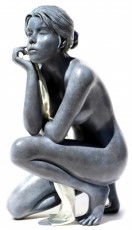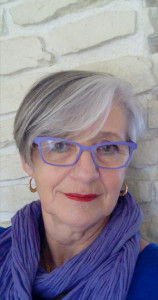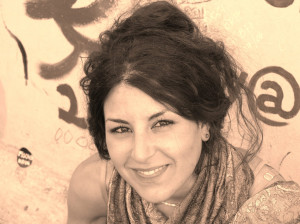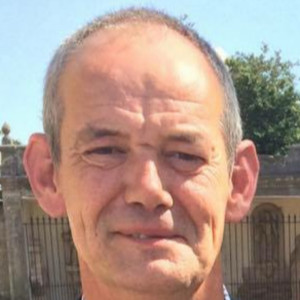
The constructive painting of Verena Loewensberg

About the retrospective exhibition devoted to Verena Loewensberg at the MAMCO in Geneva until 19 June.
She was already 74 years old when the Kunsthaus in Zurich finally gave her her first solo exhibition. It was the first time that Switzerland's largest art museum had devoted an exhibition to a woman artist. Born in Zurich in 1912, Verena Loewensberg unfortunately only had five years to live. At least she had the time to see her work recognised, even if her works of art, abstract compositions in oil paint punctuated by geometric figures, are still relatively unknown outside German-speaking Switzerland. This is all the more regrettable as his paintings are reminiscent of those of Josef Albers and Ellsworth Kelly.
It is the MAMCO, the Museum of Modern and Contemporary Art in Geneva, which is now turning the spotlight back on the self-defined "constructive artist", unconvinced as she was by the term "concrete art" which dominated the national scene until the 1960s, and with which she often found herself associated by force of circumstance: Like her fellow Zurich concrete artists Max Bill, Richard Lohse and Camille Graeser, she was part of the avant-garde which, from the mid-1930s onwards, was "trying to move Swiss art, which was still entangled in the conservatism of subject and form, towards modernity", writes Ingrid Dubach-Lemainque in the June issue of L'Œil. She does not hesitate to define Verena Loewensberg as the "poetess of concrete art" in the title of her article, although she quotes her as saying: "I have been painting constructively since 1935 and have never changed my style.
In 2007, the Geneva art critic Philippe Mathonnet stressed that "her real freedom, in fact, was not to free herself from the diktat of mathematical rhythms, but to have succeeded in inscribing within their constraints her own families of forms, configurations that belonged only to her. Her contribution is to have given flexibility to rigidity.
"It's not so easy to look at constructive paintings in an exhibition, you have to have them in front of you for a long time; these are pitfalls that I can't change," Verena Loewensberg herself admitted in a letter to her graphic artist friend Josef Müller-Brockmann, who was not at all bitter about never being able to earn a living from her art. Rather than submit to the demands of the art market, which at the time was exclusively concerned with figurative art, the artist preferred to work during the day as a weaver or graphic designer, before running a business selling jazz records, her passion, and contemporary classical music, so that she could devote herself entirely to her pictorial research at night. Even after divorcing her designer husband Hans Coray in 1949, and bringing up her two children alone in Zurich.
There is nothing to prevent you from staying long in front of the hundred or so works of art assembled on the walls of the MAMCO since 22 February and until 19 June on the occasion of the very fine first French-language retrospective organised by Lionel Bovier. Structured around the evolution of Verena Loewensberg's work, which is based on forms and series that very quickly move away from the canon of concrete art to come closer to experiments carried out within Colorfield Painting, Pop Art or Minimal Art, the exhibition starts from the relationship that the entire generation of the Abstraction-Création group has with the motif of the grid as a rational system of organisation. It shows the explosion of the grid from the 1950s onwards, while recalling the importance of music and the applied arts in the artist's early compositions.
For Verena Loewensberg, the eldest daughter of a highly educated family of doctors, of German and Jewish origin, with a passion for music, fine arts and literature, knew very early on that she wanted to do something "in the direction of art". So she took her destiny into her own hands at the age of 14, choosing to study at the Basel School of Applied Arts, becoming an apprentice in fabric weaving in the canton of Appenzell at 16, before studying contemporary dance and choreography with Trudi Tschopp in Zurich. She never completed her training. But like Sophie Taeuber-Arp (1889-1943), dance and music would eventually fertilise the painter's development of an abstract language based on rhythm. Except that she had to make the most of her mastery of the codes of the textile industry to ensure a large part of her income.
At the age of 23, Verena Loewensberg found herself in Paris on the advice of Max Bill, a graphic artist with whom she had befriended as well as his wife Binia, a photographer who had been taught by Lucia Moholy, and who was motivated by the desire to perfect her technical knowledge as a self-taught painter with Auguste Herbin (1882-1960). Herbin had not yet invented synaesthesia, but he chaired the Abstraction-Création group that he had founded at the Académie moderne with Georges Vantongerloo (1886-1965), the painter of the De Stijl movement. In the end, it was the latter who was more in tune with the young artist's aspirations. He was the only one whose influence she explicitly claimed in her few statements. She also met Max Ernst and Jean Hélion, finding in this friendly community the artistic atmosphere that made her realise that she had found her place.
The Geneva exhibition also shows this liberation of form and colour in Verena Loewensberg's work, which culminated in the series of the 1970s and 1980s, which are in dialogue with the practice of seriality and radical abstraction of which they are contemporary. She sold her first painting in 1950. With the Allianz group, she participated in the first exhibitions of the Swiss avant-garde, notably in Zurich in 1940 and in Basel in 1944, alongside Leo Leuppi, Richard Lohse, Camille Graeser and Hans Erni. But "in 1977, there was no recognition, no audience and no sales opportunities. It was like working in the middle of nowhere," she recalls. A passionate creator of a demanding, singular and solitary painting, totally committed to art, constantly searching until her death in 1986, Verena Loewensberg produced at least 630 paintings, which are now counted in the catalogue raisonné devoted to her work.





































































